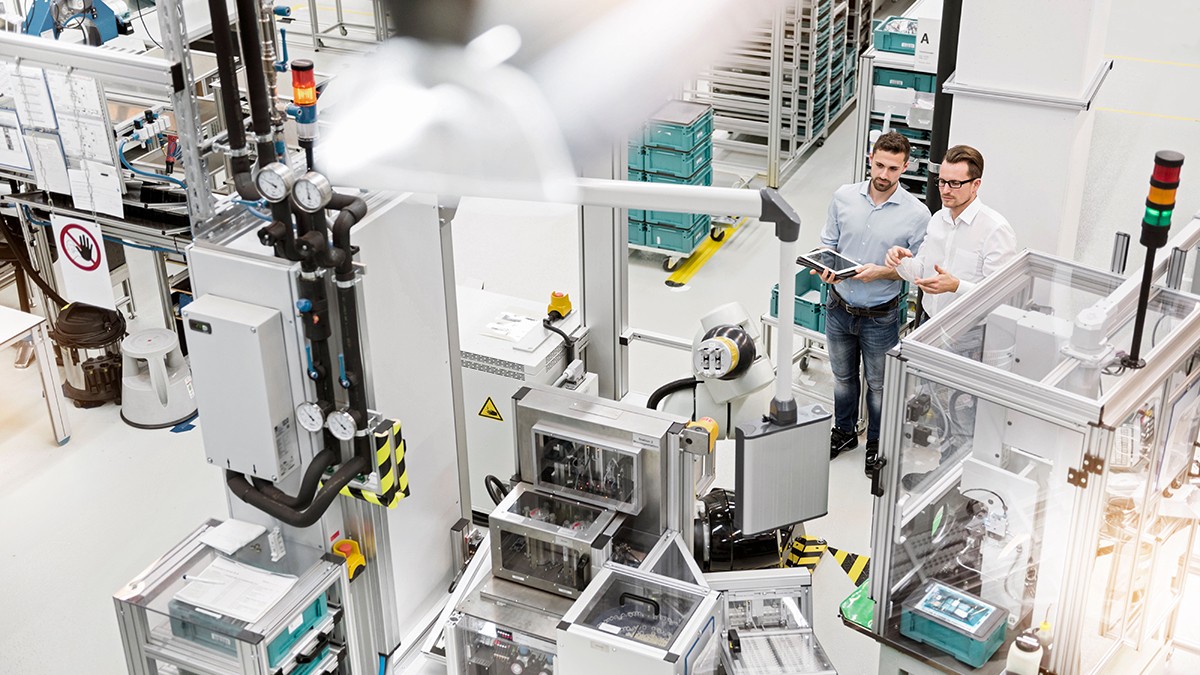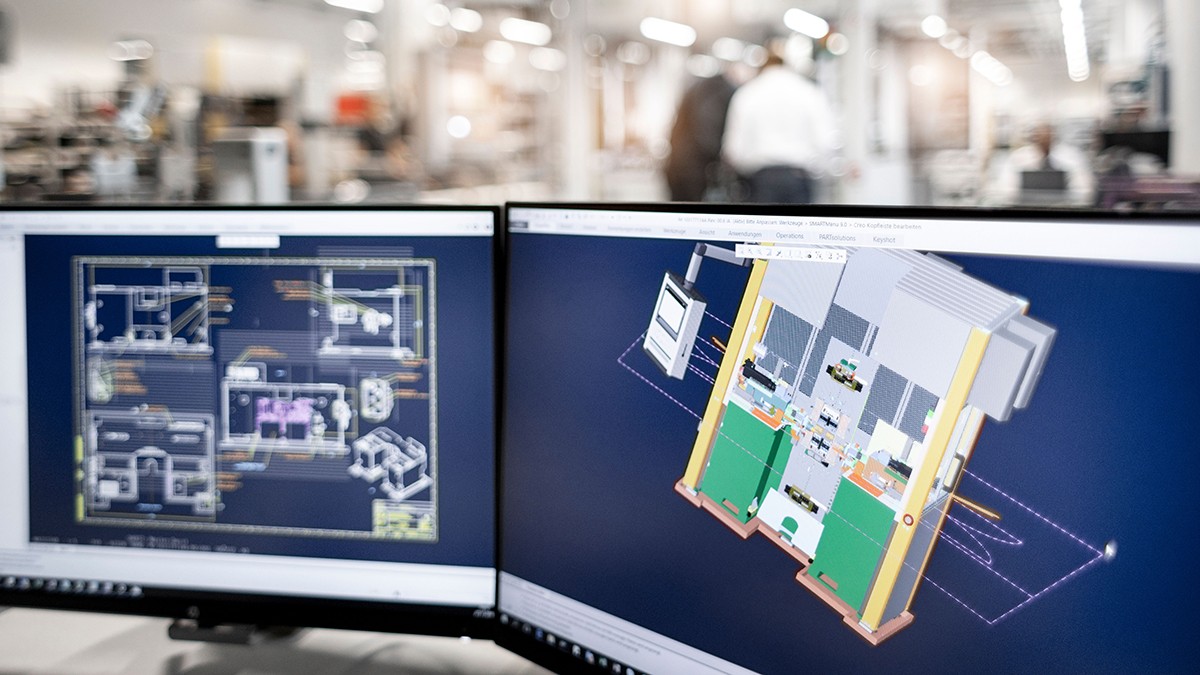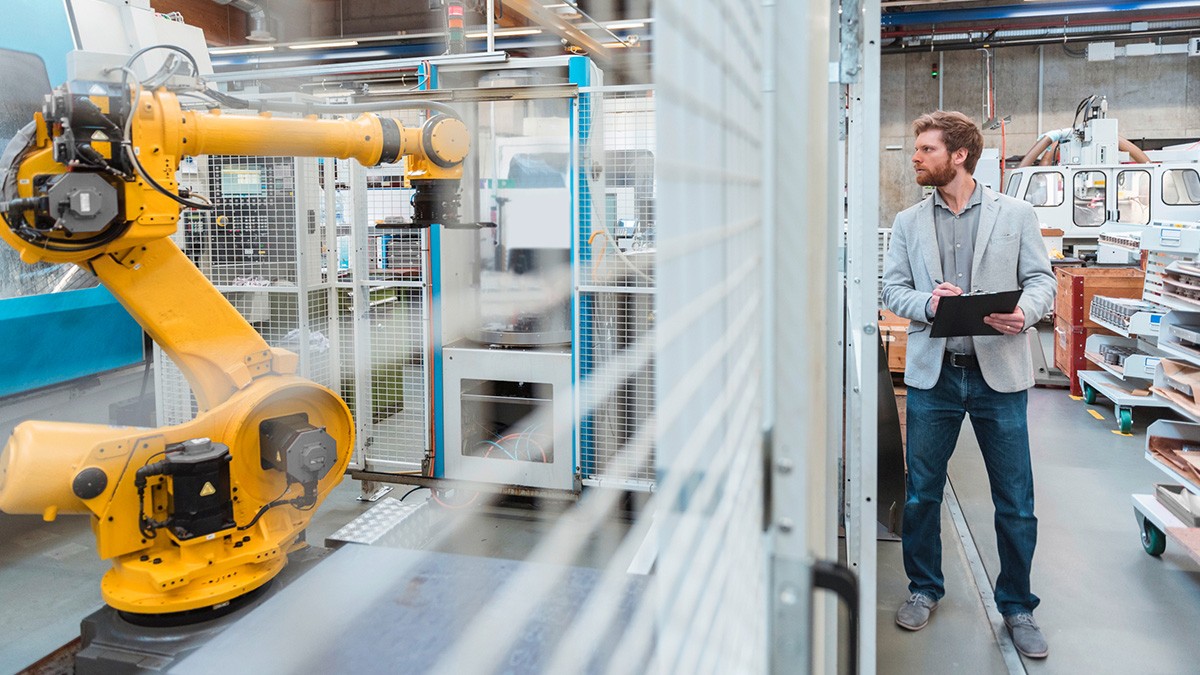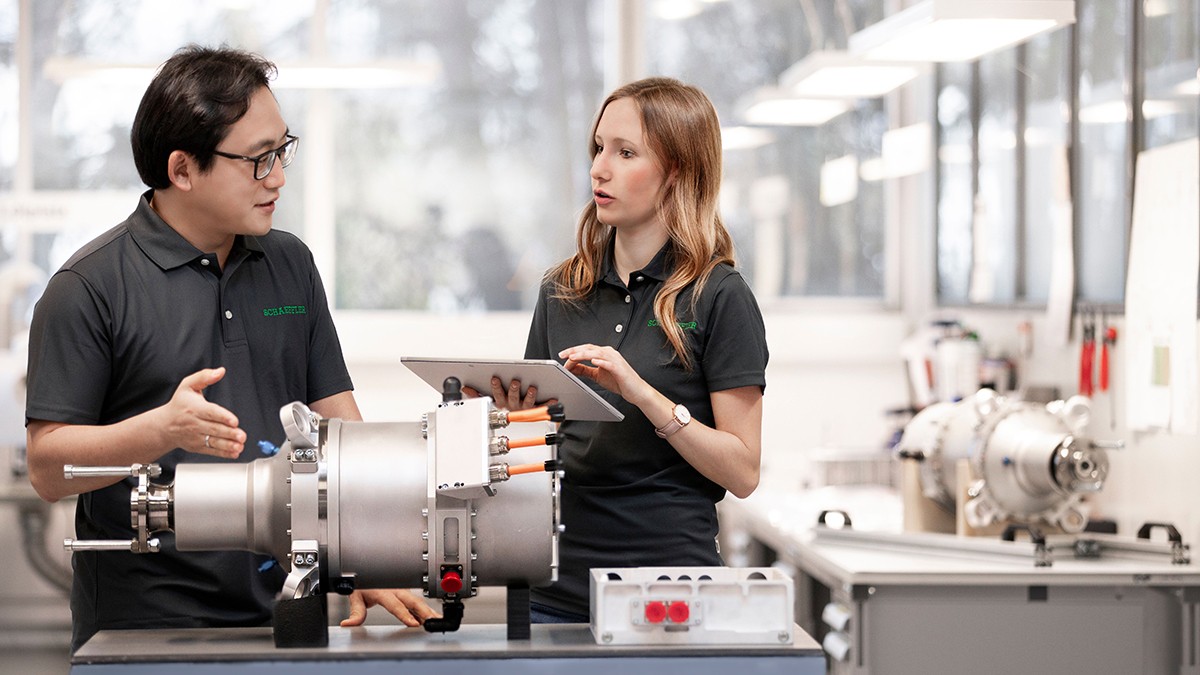Smart Factory: Digital innovation in the factory
Schaeffler is committed to shaping the future of industrial production through continuous exploration and integration of cutting-edge technologies. Achieving a smart factory of tomorrow requires an ongoing process of scouting the market for new digital technological advancements, analyzing their potential, and implementing them in practical applications. By embracing this approach, Schaeffler ensures that its factories not only remain at the forefront of innovation but also evolve into highly adaptive and intelligent environments.
How Schaeffler is shaping the future of industrial production
The Schaeffler Group has been driving forward groundbreaking inventions and developments in the field of motion technology for over 75 years. With innovative technologies, products, and services for electric mobility, CO₂-efficient drives, chassis solutions and renewable energies, the company is a reliable partner for making motion more efficient, intelligent, and sustainable – over the entire life cycle. Schaeffler's longstanding commitment to innovation in motion technology seamlessly aligns with its ambition to develop a modular, digital, and highly flexible production system by 2030. The smart factory is at the heart of this transformation. It's more than automation – it's a connected ecosystem of machines, people, and AI working in sync to increase efficiency, quality, and adaptability across the entire value chain.

What is a smart factory?

The Schaeffler Group has been driving forward groundbreaking inventions and developments in the field of motion technology for over 75 years. With innovative technologies, products, and services for electric mobility, CO₂-efficient drives, chassis solutions and renewable energies, the company is a reliable partner for making motion more efficient, intelligent, and sustainable – over the entire life cycle. Schaeffler's longstanding commitment to innovation in motion technology seamlessly aligns with its ambition to develop a modular, digital, and highly flexible production system by 2030. The smart factory is at the heart of this transformation. It's more than automation – it's a connected ecosystem of machines, people, and AI working in sync to increase efficiency, quality, and adaptability across the entire value chain.
Building the digital backbone with NavVis and digital twins
To built smart factories, a robust digital foundation is needed. With NavVis, Schaeffler has scanned 66 plants to create high-resolution digital twins as basis for smart factories. These 3D models are more than visual replicas – they provide centimeter-accurate data for planning new production lines, optimizing layouts, and training employees in virtual environments. This allows Schaeffler to simulate and validate complex production setups before physical implementation, saving time and reducing costs.

Accelerating innovation with AI and robotics

With a solid digital backbone in place, advanced AI and robotics technologies are integrated to reshape operations:
- Humanoid robots are being trained in the Industrial Metaverse, using digital simulations and physical AI. These humanoids are learning through observation and perform e.g. material handling tasks and parts assembly, allowing them to perceive their surroundings and make decisions in real-time.
- Schaefflers AI production assistant is already used in pilot plants. It connects to real-time data and uses a GPT-based engine to support team leads on the shop floor – diagnosing issues, retrieving information, and enabling faster decisions.
- Vision AI systems conduct visual inspections with precision and consistency. Whether checking for missing needles in bearings or scratches on plates, these intelligent systems enhance quality assurance and reduce human error.
Empowering people through technology
Despite high automation, people remain at the core of the production. Every employee at Schaeffler is digitally connected – with apps on mobile devices or on terminals, and with access to our learning platform. This ensures that innovations like Ai production assistant or Vision AI are accessible, intuitive, and actually used by the employees – not just implemented.
Schaeffler is using Digitalization not only to optimize processes, but to redefine what industrial production means. With digital twins as our foundation and AI-powered innovations as accelerators, Schaeffler is creating a smart, sustainable, and people-centric future for manufacturing.

September 2025



